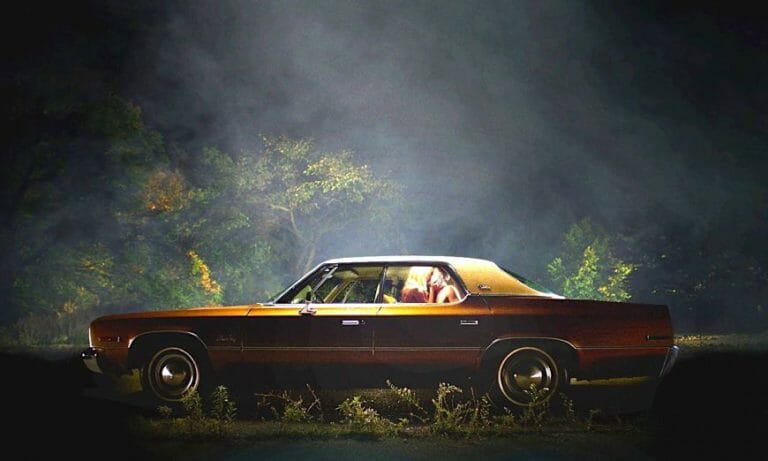Sign up for the
TSL Newsletter
and get $50 off Final Draft 12
By Jim Rohner · April 13, 2015

Sex. Intercourse. Making love. Fucking. Whatever you want to call it, it’s both a biological necessity and arguably the most powerful motivating force in human history. Legend says that it was a desire for Helen of Troy that launched one thousand ships. But just because sex has for so long been interwoven into our DNA for both pleasure and procreation doesn’t mean that our relationship with it is any less complicated.
What progress was made to further understanding and acceptance in the 60s and 70s was repressed in the 80s and 90s, with America suddenly positioning itself as a bastion of moral and ethical standards and its cinema reflecting these presumptions. In the 80s and 90s, the Slasher genre as we know it was honed and molded with its attractive yet allegedly promiscuous youths meeting grizzly ends after – but, of course, not because of (wink, wink, nudge, nudge) – partaking in such sexual perversions as intercourse sans wedlock. “Sex, unless conducted under very specific circumstances, is evil” society via cinema declared, overlooking the emotional and developmental nuance that youths – teenagers, the vast majority of the time – experience during their first formative sexual excursions.
The truth, as we all know, is that sometimes sex is beautiful. Sometimes it’s terrifying. Sometimes it invigorates us, sometimes it intimidates us, but a lot of times, sex just is. Despite the amount of blood spilt by knives, chainsaws or any other number of phallic stand-ins over the decades, no other Horror film has seemed willing to explore the emotional nuance that comes along with first love (or lust) like It Follows.
The premise of It Follows is a simple one. Girl meets boy. Girl falls for boy. Girl gives her virginity to the boy. Boy drugs girl, ties her to a chair and explains to her that now that they’ve had sex, girl will be slowly, but ceaselessly pursued by a chameleon-like entity that will kill her if it catches up to her. “It could look like someone you know or it could be a stranger in a crowd. Whatever helps it get close to you,” the boy tells her. The only cure for the affliction treats the symptoms rather than the disease: have sex with someone else and pass the curse along to them. Sexual passing the buck. But it’s important that the curse continues to be passed along because if the entity catches up and kills the girl, then it’ll come back for the boy and then whoever gave it to the boy and on and on. Sexual comeuppance.
But it’s been unfair of me to continuously refer to our protagonist as “Girl.” To do so would be unfair to the complexity and three-dimensionality of our Final Girl. The girl is Jay (Maika Monroe) and her concerns are those of any college student – that is to say, outside of Hugh (Jake Weary), the boy to whom she gives her virginity, she’s not concerned about much. Jay loves her friends and sister and when she has sex for the first time, it’s like most first times: sweet, but, save for its exclusivity, not worth writing home about. When the curse gets passed to her and the entity begins its pursuit, Jay and her friends respond as teenagers would: not with composure and planning, but with confusion and knee-jerk reactions. Jay and her friends are not adults with experience and knowledge on which to fall back – they are teenagers still being shaped and learning how to process the world around them.
It’s not just the external factors that these kids – and It Follows makes it clear at all times that they are kids – struggle to process, but the internal as well. Sex, such a new card to play in their lives, suddenly becomes a necessary tool before its larger implications of an emotional sculptor can truly be appreciated; yet its fallout is ever on display. The beauty of It Follows lies not just in how it honestly depicts the genesis of youthful sexual activity, but also its baggage. Why can’t the relentless, seemingly un-killable entity, passed along through intercourse, stand as a symbol for an STD? Why can’t its omnipresence act as a stand in for uncertainty or guilt? It Follows doesn’t intend to stand as a cautionary tale, but brilliantly stands neutral, a cinematic Rorschach test in which pundits on either side of the debate over sexuality can find merit. Is the relentless pursuit meant to warn people about the inherent dangers of sexual freedom or is it merely an honest look at inherent complexity? Both sides are valid.
But if writer/director David Robert Mitchell can’t entice your mind, then he can unsettle you visually. It’s not just attitudes towards Horror’s characters that It Follows repurposes, but its observant eye as well. The camera is not concerned with the standard angles framing the standard jump scares of the standard scary movies. Instead, Mitchell’s camera is often static and unblinking, objectively taking in the derelict Detroit suburb and anything and everything that occupies it – paranormal or otherwise. Perhaps the figure hobbling in the background is the entity coming for Jay or perhaps it’s just an innocent bystander entering the fray. The fact that we’re constantly wondering is at first a testament to how neatly labeled every other horror film that’s come before has been and how committed It Follows is to standing outside the box, but what eventually develops is an enveloping sense of inescapable paranoia that perfectly emulates the constant scanning and distrust Jay and her friends are living. By the time the screen cuts to black, the effect is so total that we wonder why it’s taken so long for the shift and how could we possibly be happy with anything less?